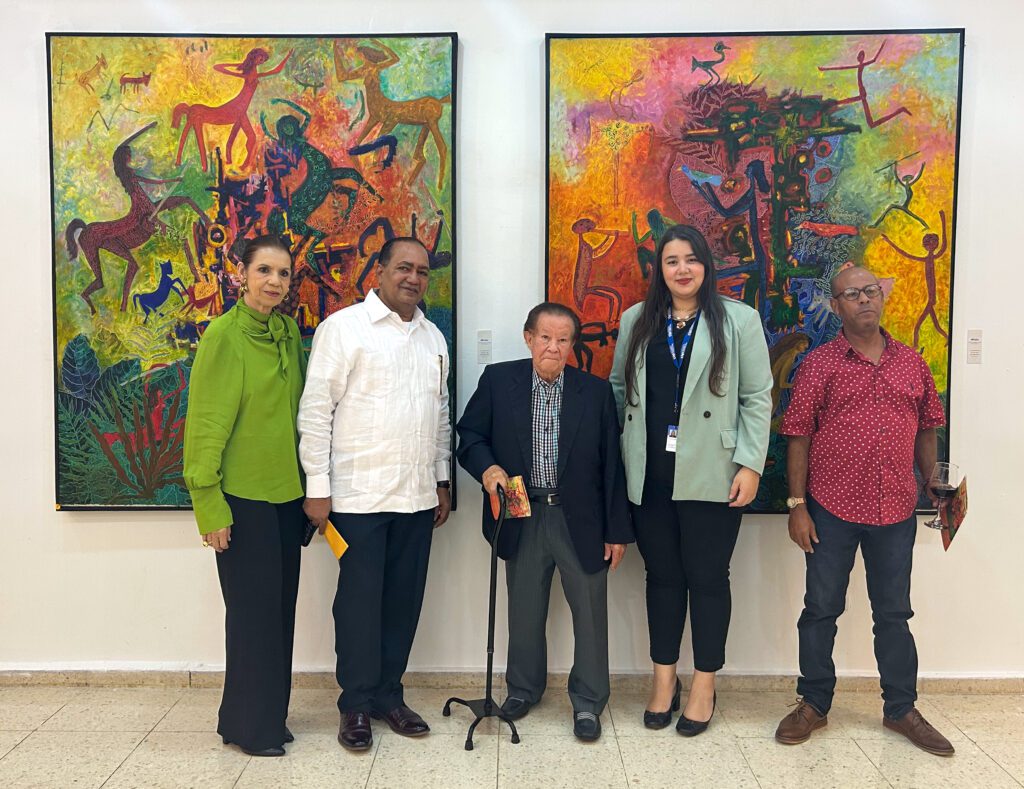
Santo Domingo, November 2023.– With the purpose of exalting artistic and cultural manifestations, the Cultural Direction of the Instituto Cultural Domínico Americano (ICDA) presents the exhibition “El Mundo Mágico de Jop y el Coleccionismo” (The Magic World of Jop and Collecting) by Dominican visual artist José Perdomo.
The exhibition was inaugurated in the exhibition hall of the main headquarters of the Domínico Americano on Abraham Lincoln Avenue, and will be available to the public until January 26, 2024 from 8:00 am to 8:00 pm.
It includes 32 works of various formats, which approach pre-Hispanic art, Taino and Afro-Antillean culture, with an impressive capacity for abstraction of nature.
The artistic pieces belong to the collection of Santiago Espinal, a Dominican collector based in the city of San Juan, Puerto Rico.
“The Instituto Cultural Domínico Americano is committed to promoting and projecting local and international art and talent, as a demonstration of this mission we present the series ‘El Mundo Mágico de Jop y el Coleccionismo”‘ with pieces full of vivid colors and dynamic strokes,” said Sofía Otero, Cultural Director of the ICDA, during the opening ceremony.
The exhibition is curated by cultural manager María del Carmen Ossaye.
Visual artist José Perdomo was born in 1946 in Santo Domingo. At a very early age he realized that the gift he had for painting, drawing and creating pictorial works flowed spontaneously as a necessity. At the age of 15 he began his training in the arts at the National School of Fine Arts and in the workshop of Paul Guidicelli and Gilberto Hernandez Ortega.
At the age of 16 he was fortunate to have a patron who gave him support and protection through his influences and offered him help to study in the United States. He returned in 1966 to present his first individual exhibition at the Palacio Nacional de Bellas Artes. Back in the United States, he studied with the masters Luis Camnitzer and Robert Motherwell. Then he lived several years in Peru, where he took the opportunity to study the Nazca Lines, Machu Pichu and Peruvian art, and finally in Brazil where he complemented these studies.
He returned to the Dominican Republic to stay in 1983. From that year on, the flat and bottomless content of his paintings, the singularity of his strokes and the strong colors of his human figures assured him a space in the Dominican plastic arts.
The Instituto Cultural Domínico Americano defines itself as an educational and cultural space for the enjoyment of national and international artistic demonstrations. It also offers opportunities for artists to reveal their most exquisite creations.

